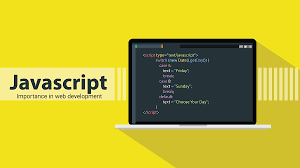JavaScript is a cornerstone of modern web development, enabling developers to build interactive and dynamic websites. This article explores how JavaScript enhances web development, providing you with the tools and techniques needed to create engaging user experiences.

1. Getting Started with JavaScript
Before diving into advanced topics, it’s essential to understand how to set up and write JavaScript for web development. This section covers:
- Including JavaScript in HTML: Learn how to include JavaScript in your HTML using
<script>tags and external files. - Basic Syntax and Structure: Understand the basic syntax of JavaScript, including statements, expressions, and comments.
2. Creating Interactive Web Elements
JavaScript allows you to add interactivity to your web pages, making them more engaging for users. Explore the following techniques:
- Event Handling: Learn how to use JavaScript to respond to user actions such as clicks, mouse movements, and keyboard inputs.
- Dynamic Content Updates: Discover how to update content on the fly using JavaScript, without needing to reload the page.
3. Working with the DOM
The Document Object Model (DOM) is a crucial part of web development, and JavaScript provides powerful methods to manipulate it:
- Selecting Elements: Learn how to select HTML elements using methods like
getElementById,querySelector, andgetElementsByClassName. - Modifying Content: Explore how to change the content, attributes, and styles of HTML elements dynamically.
4. Handling Forms and User Input
Forms are a fundamental part of web interactions. This section covers:
- Form Validation: Use JavaScript to validate user input and provide real-time feedback before form submission.
- Handling Form Submissions: Discover how to handle form data and submit it to a server using JavaScript.
5. Creating Animations and Effects
JavaScript can be used to create engaging animations and effects on your website:
- CSS Animations with JavaScript: Learn how to control and trigger CSS animations using JavaScript.
- Canvas API: Explore the Canvas API for drawing and animating graphics directly within the browser.
6. Asynchronous JavaScript and AJAX
Modern web applications often require data to be loaded asynchronously. This section includes:
- AJAX Requests: Understand how to use AJAX to fetch data from a server without reloading the page.
- Fetch API: Learn how to use the Fetch API for making network requests and handling responses.
7. Enhancing User Experience
Creating a seamless and enjoyable user experience is key to successful web development. This section covers:
- Performance Optimization: Discover techniques to optimize JavaScript code and improve website performance.
- Best Practices: Follow best practices for writing clean, maintainable, and efficient JavaScript code.
Conclusion
JavaScript is a powerful tool for building interactive and dynamic websites. By mastering the techniques outlined in this article, you’ll be able to create engaging web experiences that captivate users and enhance the functionality of your sites. Continue exploring new features and practices to keep your skills up-to-date.
Additional Resources
For further learning, check out online tutorials, documentation, and community forums dedicated to JavaScript and web development. Engaging with these resources will help you stay current with the latest trends and techniques.











